Manduca lefeburii
Manduca lefeburii
(Guérin-Méneville, [1844]) Sphinx
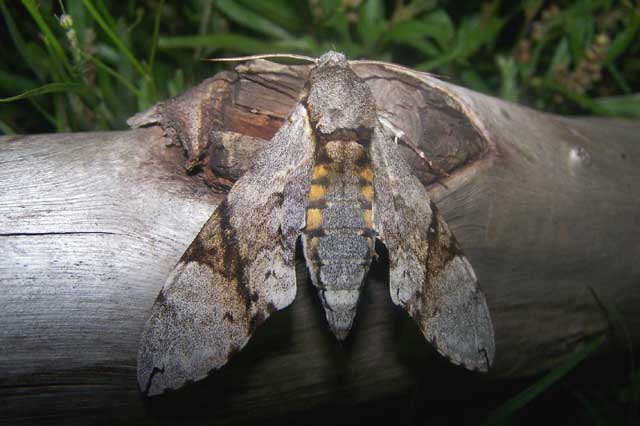
Manduca lefeburii, Paraguay, PYBIO
This site has been created by
Bill Oehlke at oehlkew@islandtelecom.com
Comments, suggestions and/or additional information are welcomed by Bill.
TAXONOMY:
Family: Sphingidae, Latreille, 1802
Subfamily: Sphinginae, Latreille, [1802]
Tribe: Sphingini, Latreille, 1802
Genus: Manduca Hubner, [1807] ...........
Species: lefeburii (Guérin-Méneville, [1844])
|
MIDI MUSIC
.....It's a Wonderful World.....
copyright C. Odenkirk
ON.OFF
<bgsound src="world.mid" LOOP=FOREVER>
|
DISTRIBUTION:
Manduca lefeburii
(Wing span: 8.9 - 11.0 cm, females larger than males),
flies in
Bolivia (specimen type locality);
Venezuela;
and generally
from Mexico and Belize to
Ecuador;
Paraguay: Concepcion, Presidente Hayes,
San Pedro, Canindeyu, Alto Parana, Caaguazu, Cordillera, Paraguari,
Itapua (PS)
and (probably/possibly Guaira, Central, Amambay and
Caazapa);
Brazil: Rio de Janeiro; and
Argentina: Misiones.
In Bolivia it has been taken in Santa Cruz: Warnes; and
Ipati (1000m), Department of Santa Cruz.
In Central America it is reported in
Belize: Cayo;
Nicaragua: Rio San Juan;
Costa Rica: Guanacaste, Puntarenas,
Alajuela, Heredia, San Jose.
By interpolation it should also be in Colombia and Peru.
The moth is named for M. Lefébure de Cerisy.
Similar to Manduca andicola, Manduca incisa and Manduca jasminearum in having a relatively uniform forewing upperside with a conspicuous,
if rather diffuse, dark band running from about midway along the costa to the outer margin near vein CuA1 and incorporating the discal spot.Distinguished
from Manduca incisa by the lack of a narrow black mesial line on the abdomen upperside; by the forewing upperside not being paler proximal to the transverse
band than distal to it; by the distal costal mark being less conspicuous; and by the shorter apical line. CATE
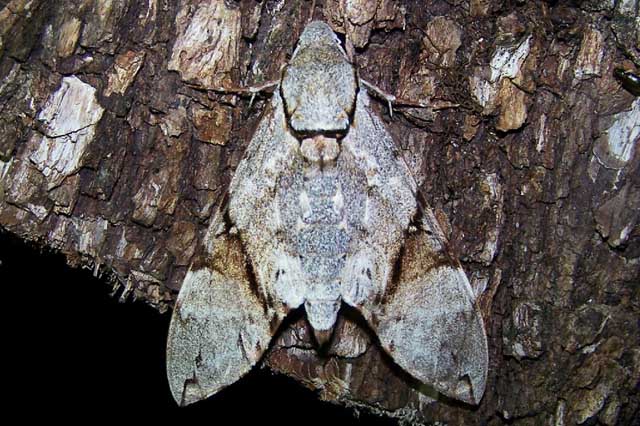
Manduca lefeburii, Paraguay, PYBIO
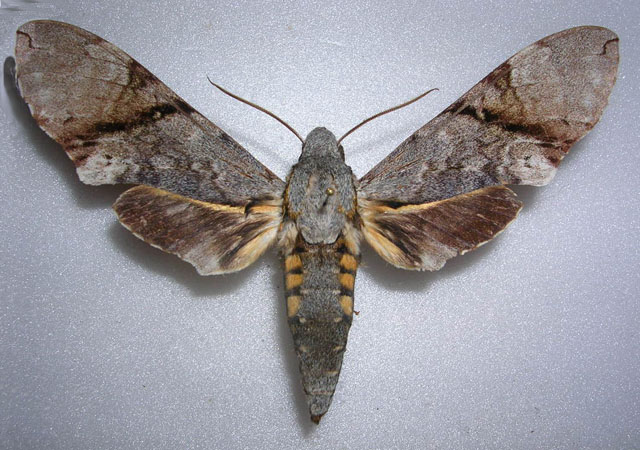
Manduca lefeburii, Brasil, Poté, Minas Gerais, November 11,
2004, courtesy of Frederik Goussey.
FLIGHT TIMES:
Manduca lefeburii
adults fly as at least two broods in Costa Rica with most adults
on the wing with the onset of the rainy season in May to June; a
second flight (much smaller) seems to follow August through
December.
In Bolivia they have been observed in October-December.
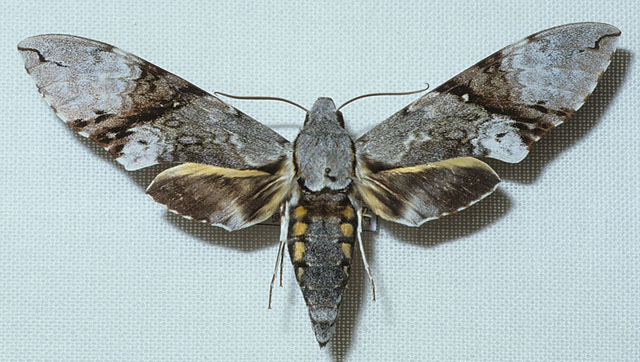
Manduca lefeburii male,
courtesy of Hubert Mayer, id by Jean Haxaire
ECLOSION:
Pupae probably wiggle to surface from
subterranean chambers just prior to eclosion.
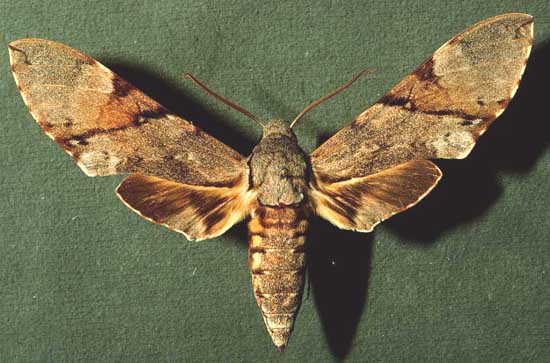
Manduca lefeburii male courtesy of Dan Janzen.
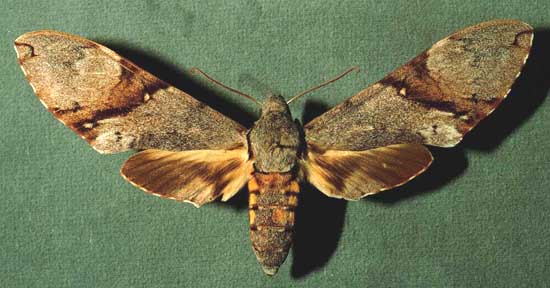
Manduca
lefeburii female courtesy of
Dan Janzen.
SCENTING AND MATING:
Females call in the males with a
pheromone released from a gland at the tip of the abdomen.
EGGS, LARVAE, PUPAE:
Larvae feed on Casearia arguta,
Casearia sylvestris and Casearia corymbosa of the
Flacourtiaceae family.


Larvae are subject to parasitization by
Microplitis espinachi of the Braconidae family.
Use your browser "Back" button to return to the previous page.
Return to Sphingidae Index
Return to Sphingini Tribe
Use your browser "Back" button to return to the previous page.
This page is brought to you by
Bill Oehlke and the
WLSS. Pages are on space rented from Bizland. If you would like
to become a "Patron of the Sphingidae Site", contact Bill.
Please send sightings/images to Bill. I will do my best to respond to
requests for identification help.
Enjoy one of nature's wonderments: Live
Saturniidae (Giant Silkmoth) cocoons.
 | 
Show appreciation for this site by clicking on flashing butterfly to the left.
The link will take you to a page with links to many insect sites. |









